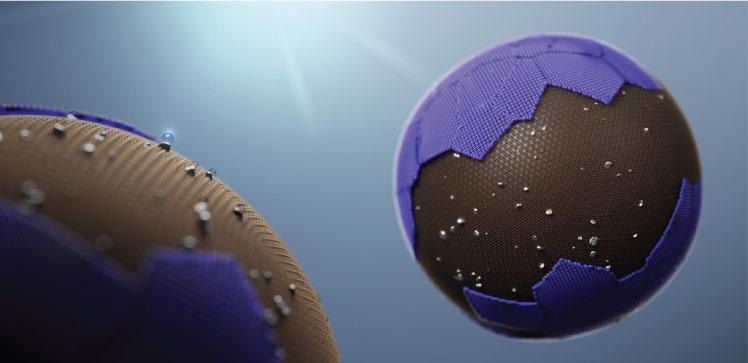
A KAUST-led international team has developed a nanoparticle photocatalyst that can generate hydrogen fuel from water more efficiently than their standard inorganic semiconductor counterparts. Image Credit: © 2022 King Abdullah University of Science and Technology; Ivan Gromicho.
Sunlight is the most abundant source of renewable energy, but its inadequacy to produce constant energy levels with respect to time implies it is not possible to fulfill energy requirements on demand.
A hopeful option is to have the potential to store solar energy as clean hydrogen fuel, that has been derived from water by the alleged hydrogen evolution reaction in the existence of a light-responsive catalyst.
The majority of the hydrogen evolution photocatalysts comprise inorganic semiconductors, like titanium dioxide, that nearly exclusively absorb ultraviolet light. However, since ultraviolet light constitutes less than 5% of the solar spectrum, the consequent photocatalysts are not sufficiently efficient for commercial use.
An international research team headed by Iain McCulloch and research scientist Jan Kosco were capable of developing organic semiconductor-based photocatalysts as they could tune the semiconductor bandgaps — which specifies the absorption wavelength range — to absorb visible light.
"All else being equal, the more light a photocatalyst absorbs, the more efficiently it can convert solar energy into hydrogen. So, it is important to develop photocatalysts that are active over a broad range of ultraviolet-visible-infrared wavelengths to maximize light absorption."
Jan Kosco, Research Scientist, King Abdullah University of Science and Technology
On being subjected to light, semiconductor-based photocatalysts produce pairs of electrons and positively charged holes, or so-called excitons, which separate into free charges that consequently could move to the photocatalyst surface and further drive hydrogen evolution.
But excitons have been tightly bound in normal single-component organic semiconductors, thereby limiting the photocatalytic efficiency and charge separation.
The scientists integrated acceptor semiconductor and electron donor materials to form nanoparticles called heterojunction photocatalysts, whose complete bandgap configuration encourages exciton dissociation at the semiconductor interface.
"This is analogous to the bulk heterojunction used in organic solar cells. We, therefore, generated more charges in these nanoparticles than in those composed of individual semiconductors, which improved hydrogen production."
Jan Kosco, Research Scientist, King Abdullah University of Science and Technology
Abruptly, the heterojunction led to extremely long-lived photogenerated charges in the nanoparticles.
"Charges typically recombine on the microsecond timescale, but we observed charges in our nanoparticles even a few seconds after photoexcitation, which is exceptionally long for photogenerated charges in organic semiconductors."
Jan Kosco, Research Scientist, King Abdullah University of Science and Technology
Kosco added, “This is critical for catalyst performance because it gives more time for the charges to take part in relatively slow redox reactions at the nanoparticle surface.”
At present, the researchers are exploring methods to employ the new photocatalysts in water splitting Z-schemes, where oxygen and hydrogen evolution photocatalysts have been coupled to concurrently drive the production of oxygen and hydrogen. Also, they are trying to develop organic semiconductor photocatalysts for the evolution of oxygen.